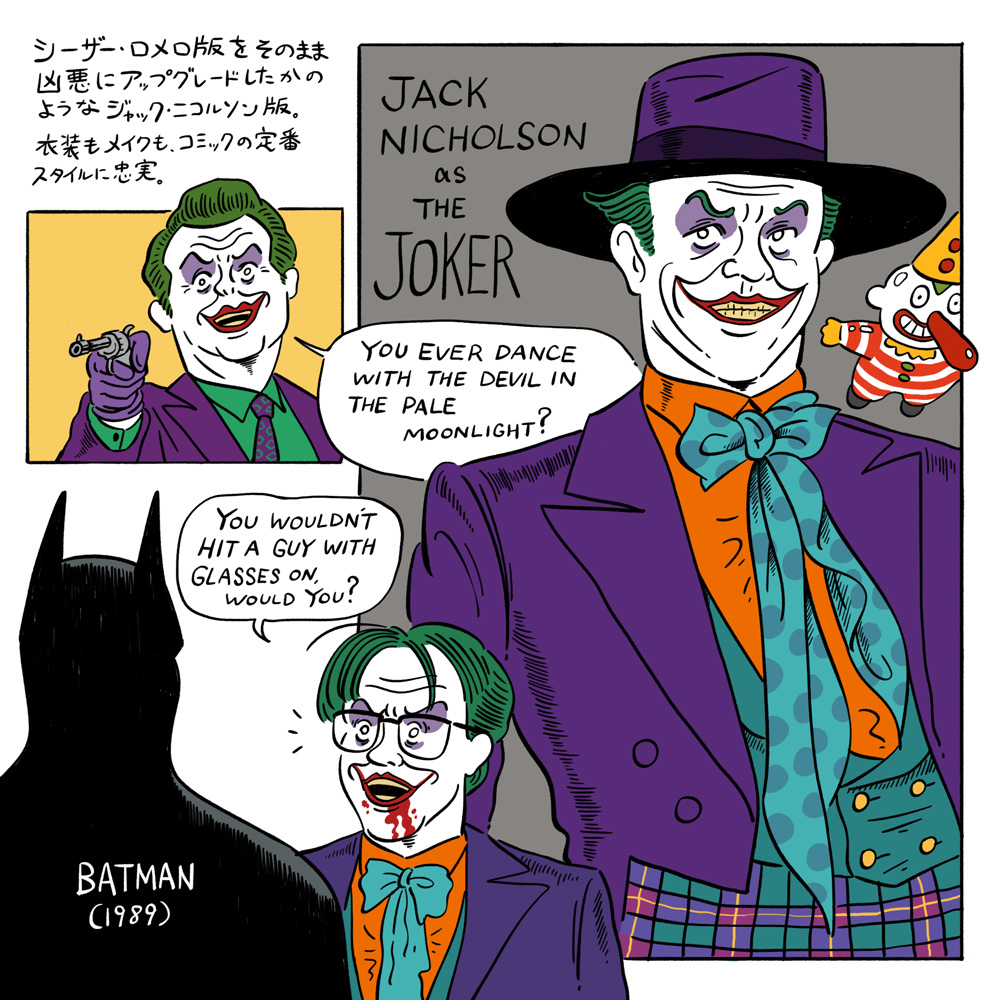![Madness straight out of a comic! Live-action Joker[Mizumaru Kawahara's CINEMONOLOGUE Vol.30]](https://cinemore.jp/images/08c38dc20b4406471486ce7baccafc1a1ebe0c1e85ee292eebb4cbdae8dc3246.jpg)
Madness straight out of a comic! Live-action Joker[Mizumaru Kawahara's CINEMONOLOGUE Vol.30]
Jack Nicholson version that is both evil and comical

I've been watching Jack Nicholson's Joker since I was a child, so in a sense it's more impressive than any other version of the Joker, and when I think of the Joker, this is the first one that comes to mind in terms of design (of course, it's the one that comes to mind now). That's why I can say that, although it wasn't the case depending on the time). Tim Burton's `` Batman '' can be said to have had a major influence not only on subsequent Batman movies, but also on the direction of live-action comic book adaptations, and of course Nicholson's Joker also played a major role.
It maintains the standard clothing and colors of the original work, and while retaining the old-fashionedness and fun of Cesar Romero's version, it also has a ferocity and darkness that perfectly blends into the crime action scene. In terms of a practical image, the later Heath Ledger version and the upcoming Phoenix version look more "like", but the Nicholson version, which is a direct live-action version of the original image, makes it possible to make various changes in the later images. I guess it can be arranged. Joker signature weapons, such as laughing gas and a corsage that shoots out sulfuric acid, also make an appearance.
There are many patterns for the story of the Joker birth in each comic work, but because it is not known whether the Joker himself is telling the truth or not, it is impossible to confirm all theories as possibilities. Yes, you can (though of course you can say that it's all a lie). A relatively standard theory is that a certain villain falls into a chemical liquid while being chased by Batman, and his skin becomes bleached and his face twitches into a smiling face. It's the background.
This theory was used in Alan Moore's classic comic The Killing Joke, which tells the story of the Joker's origin, and Burton's film version was also influenced by this theory. The movie adds elements of conflict and intrigue between the mafia, and the Joker's predecessor is a mafia heavyweight named Jack Napier. Jack is framed by his boss and cornered by the police and Batman at a chemical factory, and after a gunfight ends up falling into a tank full of chemicals (what kind of chemicals are they?). Somehow, Jack survives and undergoes surgery in a dark doctor's suspicious room (what kind of surgery is that?), and is revived in a completely changed form and stands in front of Batman.
After all, there is a contrast between Batman and Joker. Batman's entire body is completely black, regardless of his mask, cape, or bodysuit, which makes the contrast with the flamboyantly colored Joker even more striking, making for a classic two-shot between arch-enemies. What's more, here, the two are given a unique setting, and I think this is what makes the work special. Ever since the days of Jack Napier, the Joker has had a habit of always asking those he kills, ``Have you ever danced with the devil in the moonlight?'' When Bruce Wayne is attacked, he hears these words and discovers the Joker's true identity. Find out. Once, when Bruce's parents were killed in a back alley, the robber turned his gun on Bruce, and he said the same line. Young Jack Napier was the one who murdered Bruce's parents. Two monsters are connected by a single line. The circle of fate in which Jack Napier turned Bruce Wayne into Batman, and Batman turned Jack Napier into the Joker, is also a core part of this work.
Heath Ledger version that launched a new Joker and after that...

